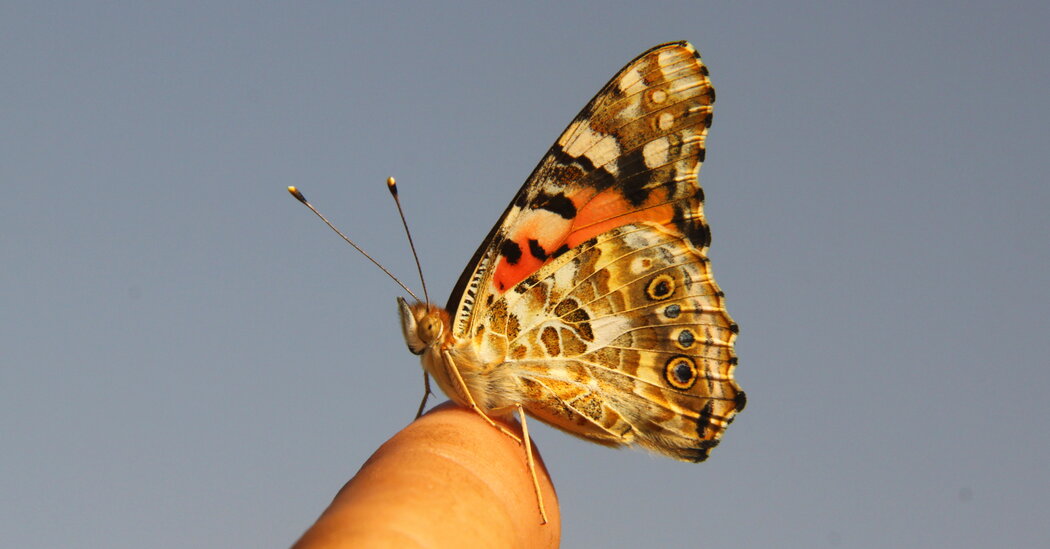Researchers discovered painted ladies on a South American beach and then built a case that they started their journey in Europe or Africa.
Early one morning in late October 2013, Gerard Talavera, an entomologist, saw something highly unusual — a flock of painted lady butterflies stranded on a beach in French Guiana.
The painted lady, or the species Vanessa cardui, is one of the world’s most widespread butterflies, but it isn’t found in South America. Yet there they were, lying in the sand of the continent’s eastern shores, their wings tattered and riddled with holes. Judging by their condition, the bleary-eyed Dr. Talavera, who works at the Institut Botànic de Barcelona in Spain, guessed they were recovering from a long flight.
The insect is a champion of long-distance travel, routinely crisscrossing the Sahara on a trek from Europe to Southern Africa, covering up to 9,000 miles. Could they also have made the 2,600-mile journey across the Atlantic Ocean without any place to stop and refuel? Dr. Talavera wanted to find out.
Following the long-range movements of insects is challenging. Tools like radio-tracking devices are too large for insects’ small and delicate frames, and radar allows for monitoring only of specific locations. Scientists have had to rely on educated guesses and citizen-scientist observations to piece together travel patterns.
“We see butterflies that appear and disappear, but we are not proving the links directly, we are just making assumptions,” Dr. Talavera said.
In 2018, he developed a way to use a common genetic sequencing tool to analyze pollen DNA. Pollen grains stick to pollinating insects like butterflies when they are feeding on nectar from flowers. Dr. Talavera used a method called DNA metabarcoding to sequence the pollens’ DNA and determine which plant they came from. Later, the DNA could be traced to geographical flora to chart the insect’s path.
